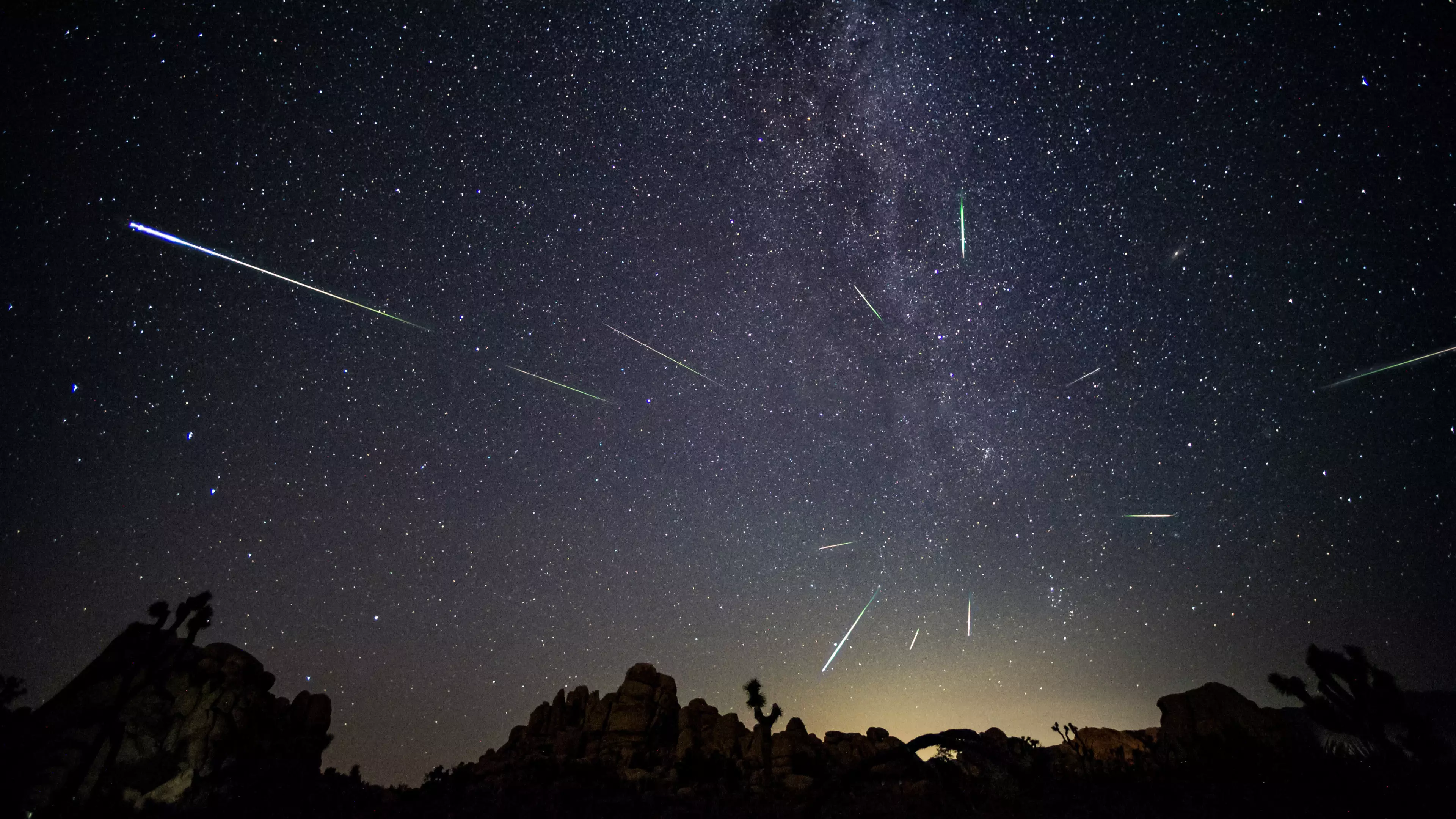
Hundreds of brightly coloured shooting stars will fill the skies this weekend, and this year, the annual meteor shower will appear stronger than usual.
Widely regarded as the best annual meteor shower, stargazers can expect to see the Geminids between 4 and 17 December, with the peak taking place overnight from Sunday 13 to Monday 14 December.

According to Royal Museums Greenwich, the rate you can expect to see in the Northern Hemisphere will be around 100 meteors an hour - almost one every 30 seconds.
Advert
NASA says that if you are in the Southern Hemisphere, you may see just 25 percent of the rate in the Northern Hemisphere, depending on your latitude.
The Geminids' parent is 3200 Phaethon - which is considered either an asteroid or an extinct comet.
Trails of dust that have been left behind in the past are stuck in orbit, and when the earth passes through it, the bits of debris burn up as they hit the atmosphere, creating the meteor shower.
But this year, it will be appear to be at an even faster rate, as the peak of the shower overlaps with an almost new moon.
Advert
This means the skies will be nearly at their darkest, with no moonlight to wash out the fainter ones.
Some meteor activity will be visible in the days before and after. Northern Hemisphere observers can see Geminids from around 7.30pm to 8.00pm local time on 13 December - with the rate of meteors increasing as 2am approaches, when it will peak.
In the Southern Hemisphere, the best time to view it will be after midnight.

According to NASA, the meteors are so bright, that 'many people say Geminid meteors show colour. In addition to glowing white, they have been described as appearing yellow, green, or blue'.
Advert
The space agency advised: "If it's not cloudy, get away from bright lights, lie on your back, and look up.
"Remember to let your eyes get adjusted to the dark - you'll see more meteors that way.
"Keep in mind, this adjustment can take approximately 30 minutes.
"Don't look at your cell phone screen, as it will ruin your night vision!
Advert
"Meteors can generally be seen all over the sky.
"Avoid watching the radiant because meteors close to it have very short trails and are easily missed.
"When you see a meteor, try to trace it backwards. If you end up in the constellation Gemini, there's a good chance you've seen a Geminid."
Featured Image Credit: PA